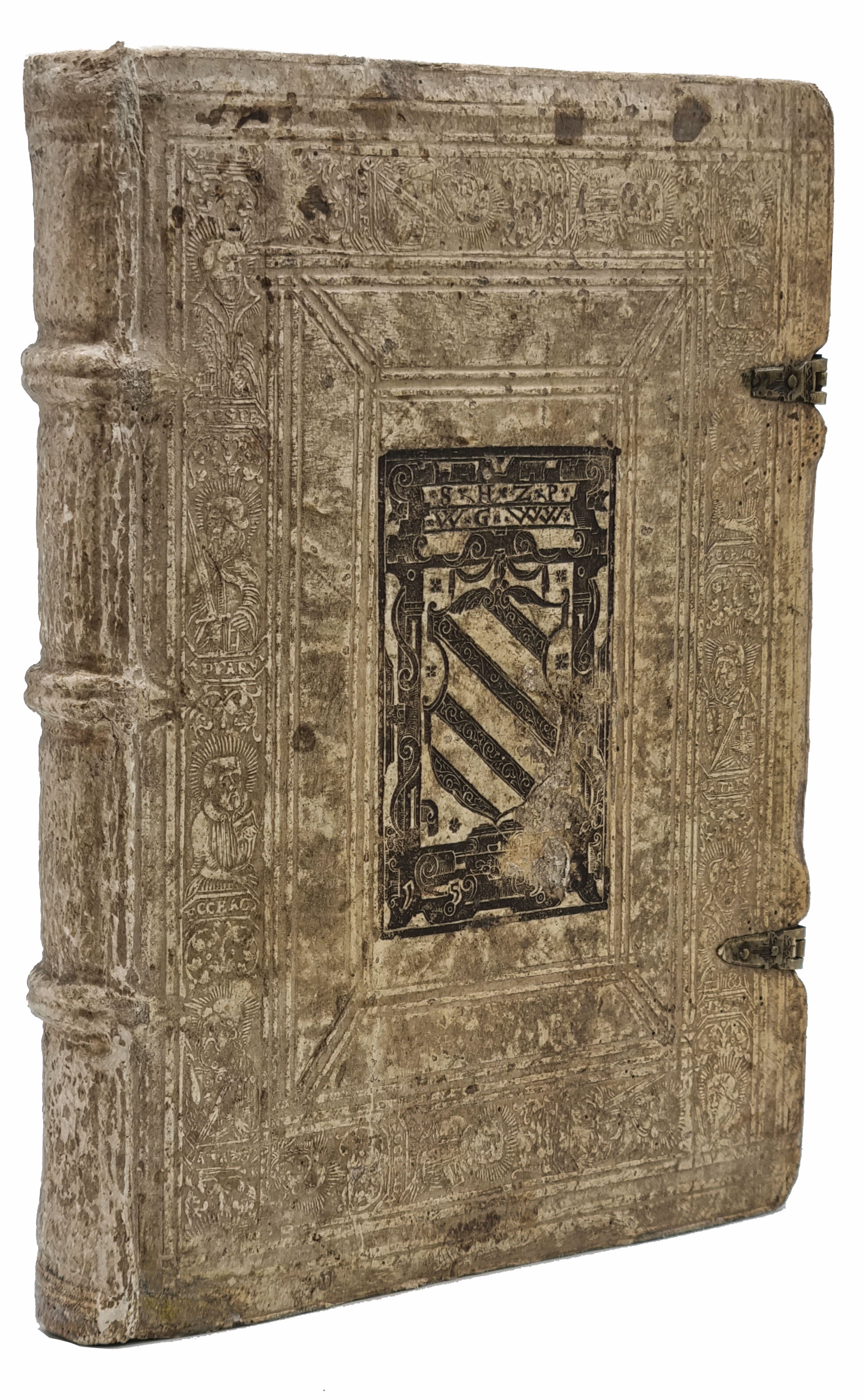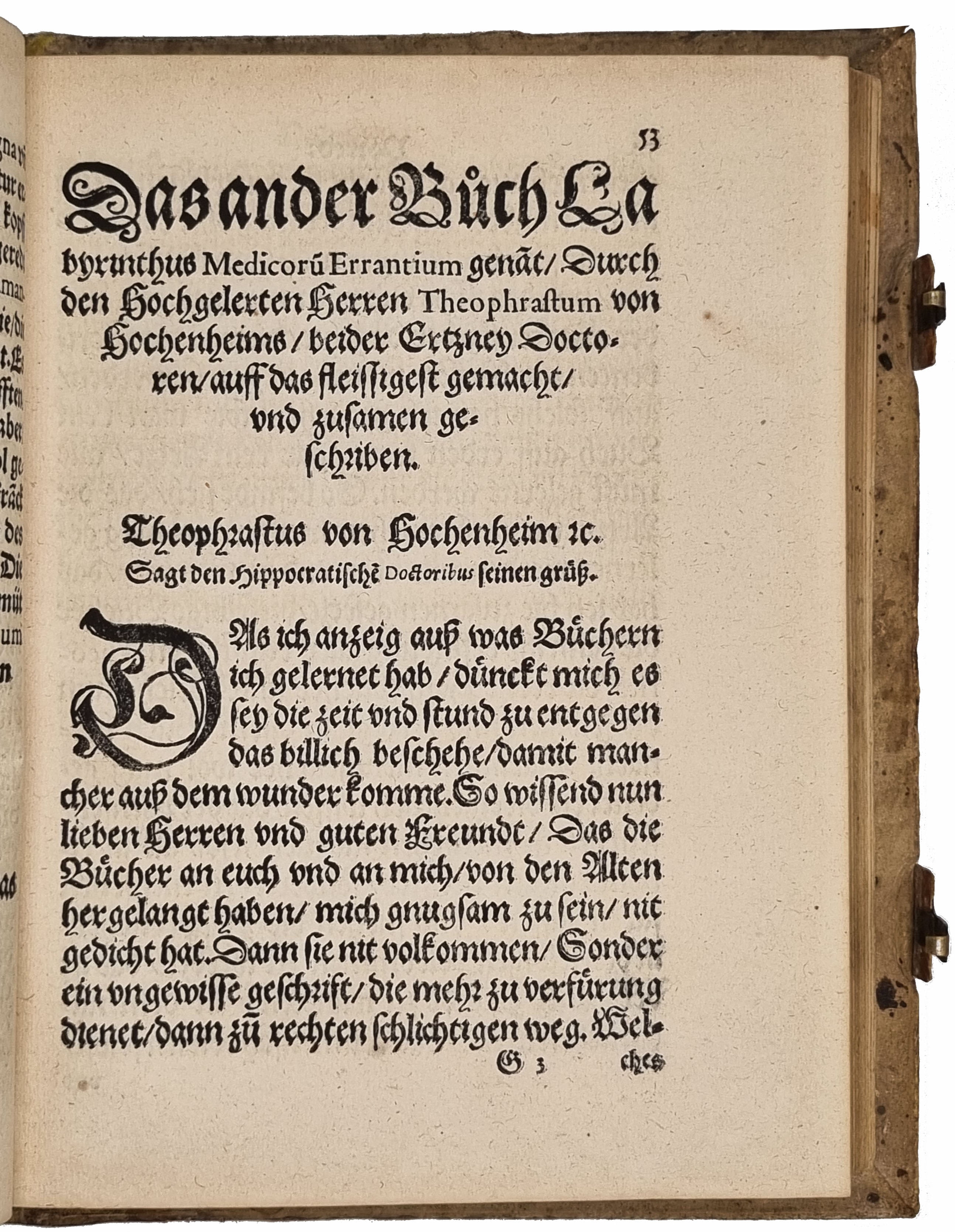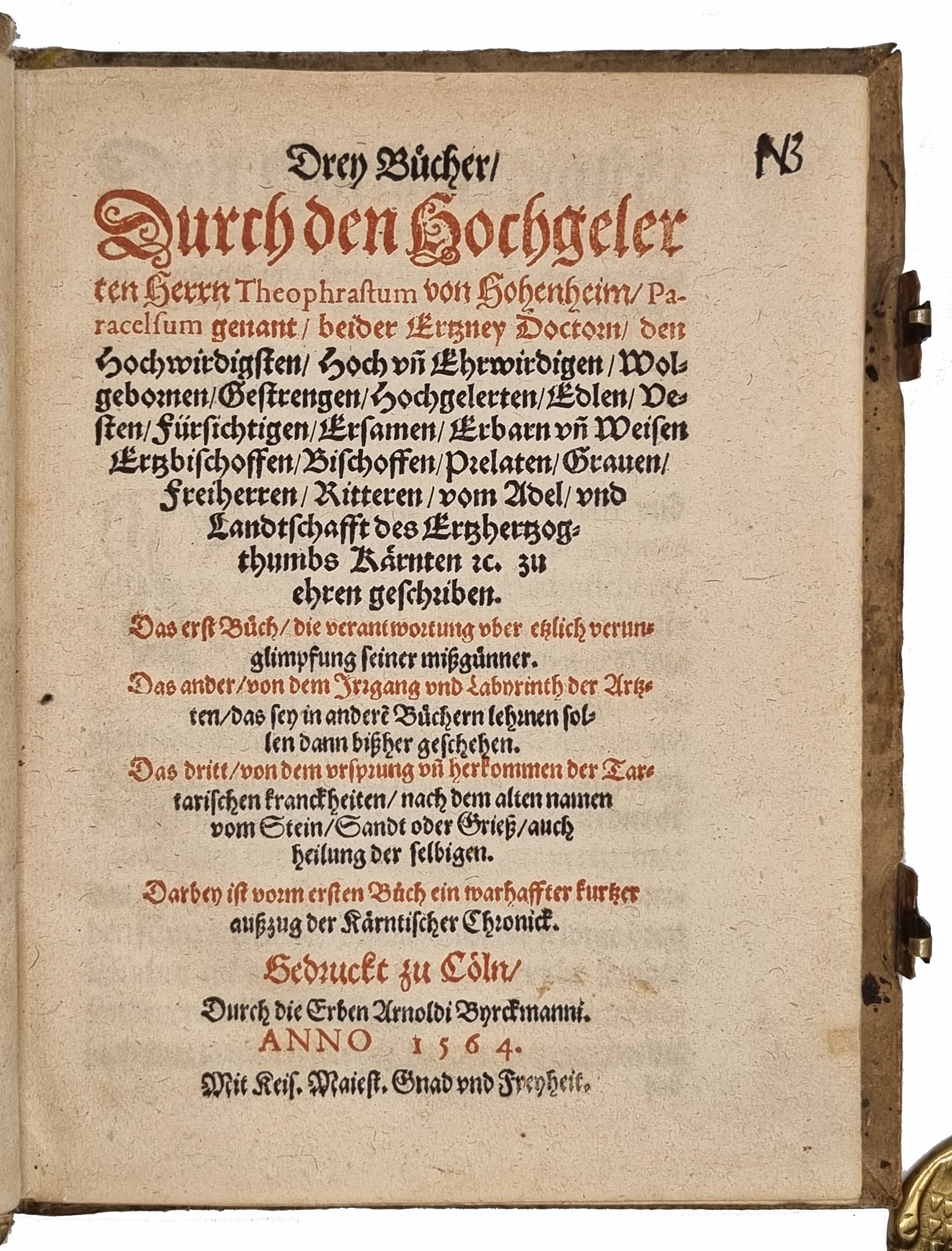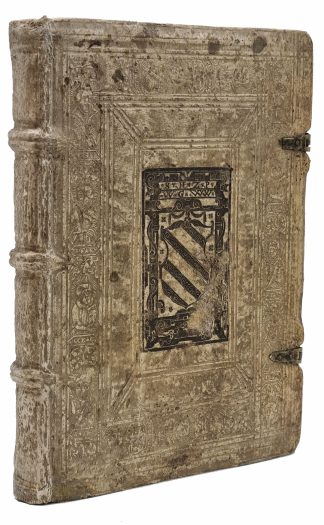PARACELSUS.
SPLENDID ARMORIAL BINDING
Drey Bücher / Durch den Hochgelerten Herrn Theophrastum von Hohenheim.
Cologne, Arnold Byrckmann, 1564£6,500.00
FIRST EDITION thus. 4to. pp. (xvi) 292 (ii), lacking final blank. Gothic letter, little Roman. T-p in red and black, woodcut arms of Paracelsus at foot of last verso, decorated initials. Occasional light age browning, a very good, clean, well-margined copy in contemporary (probably Austrian) pigskin over bevelled wooden boards, two clasps, double blind ruled to a panel design, outer border with blind roll of scriptural half-figures, central panel with (lower cover) blind rolls of interlacing palmettes and (upper) fine centrepiece blind-stamped in black, ‘S.H.Z.P.’ [Sigmund Herr Zu Polheim?] and ‘W.G.W.W.’ [Was Gott Will, Wird] at head, arms of von Polheim below, ‘3’ stamped to lower right-hand corner of vignette, raised bands, few scattered ink spot at head of upper cover, traces of old adhesive (?) to armorial stamp. ‘Ex Libris Lessellii’ stamp on front pastedown.
This copy was in the library of Sigmund von Polheim (1531-98), Herr zu Polheim, Parz und Steinhaus, Austria. After studying at the court of Lorraine and elsewhere abroad, he married Potentiana von Hohenfeld and moved to Schloss Parz, in Grieskirchen. Inspired by his humanist scholarly education, he decorated the castle in a Renaissance style; in particular, the southern façade bears the largest cycle of frescoes ever produced in northern Europe. He promoted local schools and was a music lover.
A very good, clean copy of these scarce medical Paracelsiana. The Swiss Theophrastus von Hohenheim (1493/4-1541) used the pseudonym Paracelsus for most of his successful career as an alchemist, philosopher and physician. He was very influential in the development of empirical observation and the use of chemistry (embracing toxicology) in medical practice, though associated with Hermetic and occult philosophies. After his death, many spurious alchemical texts were attributed to him for marketing purposes and printed individually or in collections, as here. Hence their complex bibliographical history and his increasing reputation as a magician. Of the three works in this collection, the first—‘Verantwortung’—comprises seven defences of Paracelsus’s theories. The sections on natural magic, cosmology and demonology drew from his magnus opus ‘Astronomia magna’, only printed for the first time in 1571. Among other things, the work addresses his views on toxicology and chemistry (e.g., arsenic and quicksilver), and the ‘false art’ of alchemists. The second—‘Labyrinthus Medicorum Errantium’—focuses on the ‘mistakes’ of physicians following the ‘old medicine’, not the ‘book of nature’, i.e., the knowledge of the chemical composition of basic natural elements, which Paracelsus strongly advocated. In particular, the section concerning why ‘a physician without the knowledge of alchemy cannot call himself a physician’ explains his views on the workings and abuses of alchemy. Other discuss the importance of the ‘Liber experientiae’, the only true medical book of any use, by which science and experience should proceed together through ‘experimentation’, or the importance of natural magic as ‘teacher’ to medicine. The third work—‘Von den Tartarischen Kranckheiten’—is devoted to illnesses caused by the accumulation of ‘tartarus’, a dry deposit formed of coagulated salt, as a result of the digestive process. In the form of grit or small stones, it could build up in the teeth, lungs, stomach or kidneys. The work discusses its nature, kinds, formation (in men and women), illnesses caused, body parts affected, and treatments. This study ‘epitomises and applies all that is essential in Paracelsus’ reform of pathology. […] embedded in [the] idea of tartar, one can find such notable protoscientific observations as the appreciation of acid as a potent factor in digestion and of albumen in urine as an important indicator of disease’ (Pagel, 157). An attractive copy of this scarce medico-alchemical work.
Only Harvard, Iowa and Cincinnati copies recorded in the US. Durling 3466; Sudhoff, Bib. Parac., 64; Ferguson, Bib. Parac., 124. Not in USTC, Ferguson, Bib. Chem., Caillet, Wellcome or Cantamessa. Handbuch Höfe und Residenzen im spätmittelalterlichen Reich, 15.IV, pp.1111-12; W. Pagel, Paracelsus (1982).In stock






